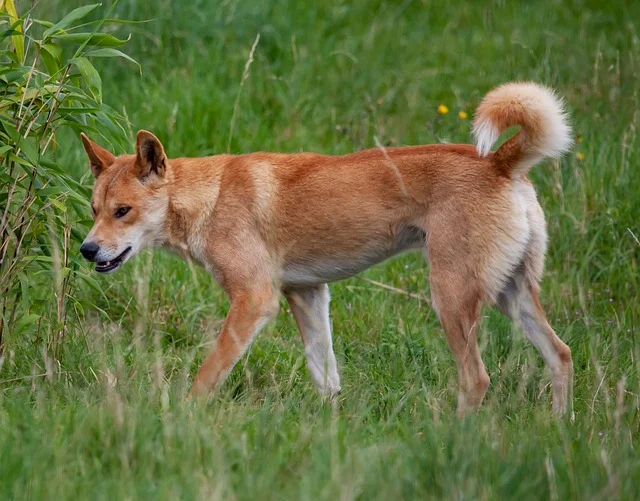Dingo: The King of Australia
Dingo (Canis lupus dingo) Australia is a land of unique and fascinating creatures, and the dingo is undoubtedly one of its most iconic inhabitants. These wild canines have captured the imagination of people around the world with their distinctive appearance, cunning intelligence, and mysterious origins. In this article, we will take a closer look at the dingo, exploring its history, biology, behavior, and cultural significance. Join us on a journey to discover why the dingo truly deserves its title as the king of Australia.
In this article, we will cover
- Introduction
- The History of the Dingo
- Biology and Anatomy of the Dingo
- Adaptations and Behavior of the Dingo
- The Role of Dingoes in Australian Ecosystems
- The Cultural Significance of Dingoes in Australia
- The Future of Dingoes in a Changing World
- Conclusion
- FAQs
1. Introduction
The dingo (Canis lupus dingo) is a wild dog that is native to Australia. Although it resembles a domesticated dog in many ways, the dingo is a distinct subspecies that has been living in Australia for over 4,000 years. These animals are highly adaptable and have been able to survive in a wide range of habitats, from deserts and grasslands to forests and mountains. Today, dingoes are found throughout most of Australia, although their populations have declined in some areas due to habitat loss and persecution by humans.
2. The History of the Dingo
The origins of the dingo are a subject of debate among scientists and historians. Some believe that the dingo was brought to Australia by ancient seafarers from Asia, while others argue that it evolved from domesticated dogs that were brought to the continent by Aboriginal people thousands of years ago. Regardless of its origins, the dingo has been an important part of Australian ecosystems and culture for millennia.
3. Biology and Anatomy of the Dingo
Dingoes are medium-sized canines that typically weigh between 10 and 20 kilograms. They have a distinctive appearance, with short fur that can be a range of colors, from sandy yellow to reddish-brown. Their ears are erect and their tails are bushy and pointed. Dingoes are well-adapted to their environment, with sharp teeth and powerful jaws that allow them to hunt and scavenge a variety of prey.
4. Adaptations and Behavior of the Dingo
Dingoes are highly adaptable and have evolved a range of behaviors that allow them to survive in different environments. They are social animals that live in packs, with a dominant alpha male and female leading the group. Dingoes are skilled hunters, but they also scavenge and eat a variety of plant material. They are active at night and can travel long distances in search of food and water.
5. The Role of Dingoes in Australian Ecosystems
Dingoes play an important role in Australian ecosystems as apex predators. They help to control the populations of other animals, such as kangaroos and wallabies, and prevent overgrazing and habitat destruction. Dingoes are also important in maintaining the health and diversity of ecosystems, as they are able to prey on weak or diseased animals and prevent the spread of diseases.
6. The Cultural Significance of Dingoes in Australia
Dingoes have been a part of Aboriginal culture and mythology for thousands of years. They are often portrayed as tricksters and wise creatures that have the ability to teach humans important lessons. Dingoes have also been a source of food and fur for Aboriginal people, and have been used in ceremonies and rituals.
7. The Future of Dingoes in a Changing World
Despite their important role in Australian ecosystems and culture, dingoes face numerous threats to their survival. Habitat loss, fragmentation, and degradation are major factors that have reduced the dingo’s range and population size. Additionally, dingoes are often viewed as pests or threats to livestock, leading to persecution by humans. In some areas, dingoes have been subject to control measures such as poisoning and trapping, which can have negative impacts on their populations and ecosystem functions.
As the world continues to change due to climate change, land-use changes, and human activities, the future of dingoes remains uncertain. It is important for scientists, policymakers, and the public to recognize the value of dingoes and work towards conservation efforts that ensure their continued existence in the wild.
8. Conclusion
The dingo is a unique and fascinating animal that holds an important place in Australian ecosystems and culture. As apex predators, they help to control the populations of other animals and maintain the health and diversity of ecosystems. However, they face numerous threats to their survival, including habitat loss, persecution, and climate change. It is important for us to recognize the value of dingoes and work towards their conservation, so that they can continue to thrive as the king of Australia.
9. FAQs
- Are dingoes dangerous to humans? Dingoes are generally not considered dangerous to humans, but they can become aggressive if they feel threatened or are protecting their territory or young.
- Can dingoes interbreed with domestic dogs? Yes, dingoes can interbreed with domestic dogs, which can lead to hybridization and loss of genetic diversity in dingo populations.
- What is the difference between a dingo and a domestic dog? Dingoes are a distinct subspecies of the gray wolf (Canis lupus), while domestic dogs (Canis lupus familiaris) are a separate species that has been bred for specific traits by humans.
- Why do dingoes howl? Dingoes howl to communicate with each other and establish their territory. Howling can also be a sign of aggression or alarm.
- Are dingoes protected by law in Australia? Dingoes are protected by law in some parts of Australia, but their legal status varies depending on the state or territory. It is important to check local regulations before interacting with dingoes in the wild.





Leave a Comment